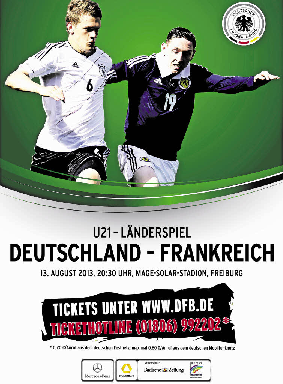| Seite 10 |
Lesen und Schreiben
|
Skills in reading German can progress more quickly than listening, speaking, or writing.
But reading in a second language requires strategies.
When reading in their native language, people do not actually read many of the words.
Rather, the brain automatically fills in and makes connections. In a second language, people typically try to read every word. This leads to breakdown of comprehension, because the brain gets stuck on unknown words and resists moving past them. Do not look up the meaning of words and attempt to translate. It takes up a lot of time, is frustrating, and is not necessary.
In most cases, complete sentences (with subject and verb) will be required for the answers. For example, if the question is "Wann wurde Abraham Lincoln geboren", then do not answer with just the date, but rather: "Abraham Lincoln wurde 1809 geboren."
|
 |
Übung 1-10a. Guessing. Keep in mind the context of a reading passage. See the image on the left.
|
Übung 1-10b. Lyndsey ist Austauschstudentin (exchange student) aus den USA. Teresa ist auch Austauschstudentin aus Deutschland und
studiert in den USA.
Lyndsey just arrived at the university in Jena, Germany. She writes an email to her German friend, who
is studying in the United States.
- Think about the topics and words you have learned in this chapter. With this in mind, write down in English what kind of
information Lyndsey would share with Teresa.
- Skim through the reading and list words in German that fall in the following categories:
Universität Eigenschaften Aktivitäten Gegenstände im Zimmer - In German, compound nouns are written together as one word, whereas they are often written separately in English.
For example, "tea cup" in German is "Tee" (tea) + "Tasse" (cup) = "die Teetasse". Find words in the Email that mean:
- contact information: ________________________________
- living situation __________________________________
- table lamp: _________________________________
- living room: _________________________________
- Without looking them up in a dictionary, guess what the following words in the top frame of the email mean in English:
- Antworten: _________________________
- Weiterleiten: ___________________________
- Löschen: _____________________________
- Suchen: __________________________________

|
Übung 1-10c. Inhaltsfragen Complete the assignment on BOLT in the designated submission folder under "Assignments". Submit the answers in an MS-Word document ONLY. Answer in complete sentences.
- Um wieviel Uhr schreibt Lindsey die Email?
- Woher kommt Karl?
- Wer ist sportlich?
- Was macht Claudia sehr gut?
- Warum ist Skype besser als (better than) Telefonieren?
- Was für Menschen sind Lyndseys Mitbewohner?
- Wie geht es Karl?
- Was machen Lyndsey und die Mitbewohner um 19.00 Uhr?
- Wie ist Lyndseys Zimmer?
How to Write a Composition in German
Essays will be submitted to the designated folders on BOLT under "assignments".
|
Übung 1-10d. Schreiben Pretend you are writing an email to a German who is coming to study at your university for a semester. Use the correct salutation: "Liebe" (Dear) for female and "Lieber" for male, as in "Lieber Josef". Introduce yourself: name, age, where you are from, your likes/dislikes, your personality, some daily activities (including times and days), and objects.
Ask several questions.
Close with the proper salutation and your name: "Mit freundlichen Grüßen" (Literally "With friendly greetings", equivalent of "yours truly" or "sincerely").
Minimum length for grade of
- "C": 125 words with minimal errors
- "B": 150 words with minimal errors
- "A": 175 words with minimal errors
- fewer than 125 words is a zero.
- Textbook Introduction
- Kapitel 1: Seite 1 (page 1)
- Kapitel 1: Seite 2 (page 2)
- Kapitel 1: Seite 3
- Kapitel 1: Seite 4
- Kapitel 1: Seite 5
- Kapitel 1: Seite 6
- Kapitel 1: Seite 7
- Kapitel 1: Seite 8
- Kapitel 1: Seite 9
- Kapitel 1: Seite 10
- Kapitel 1: Seite 11